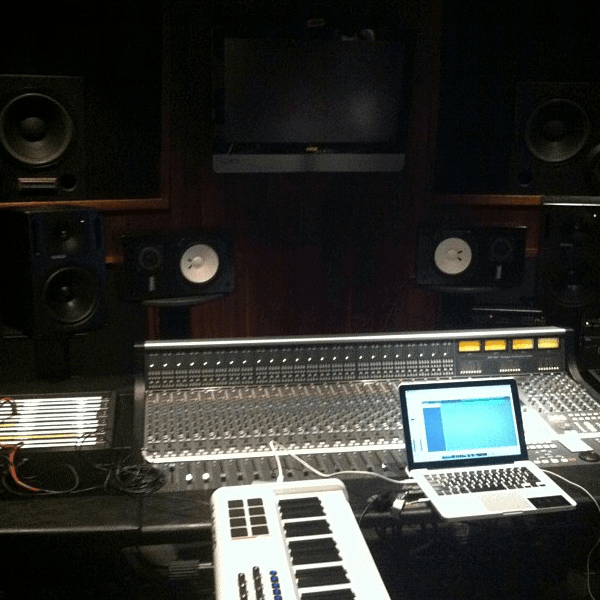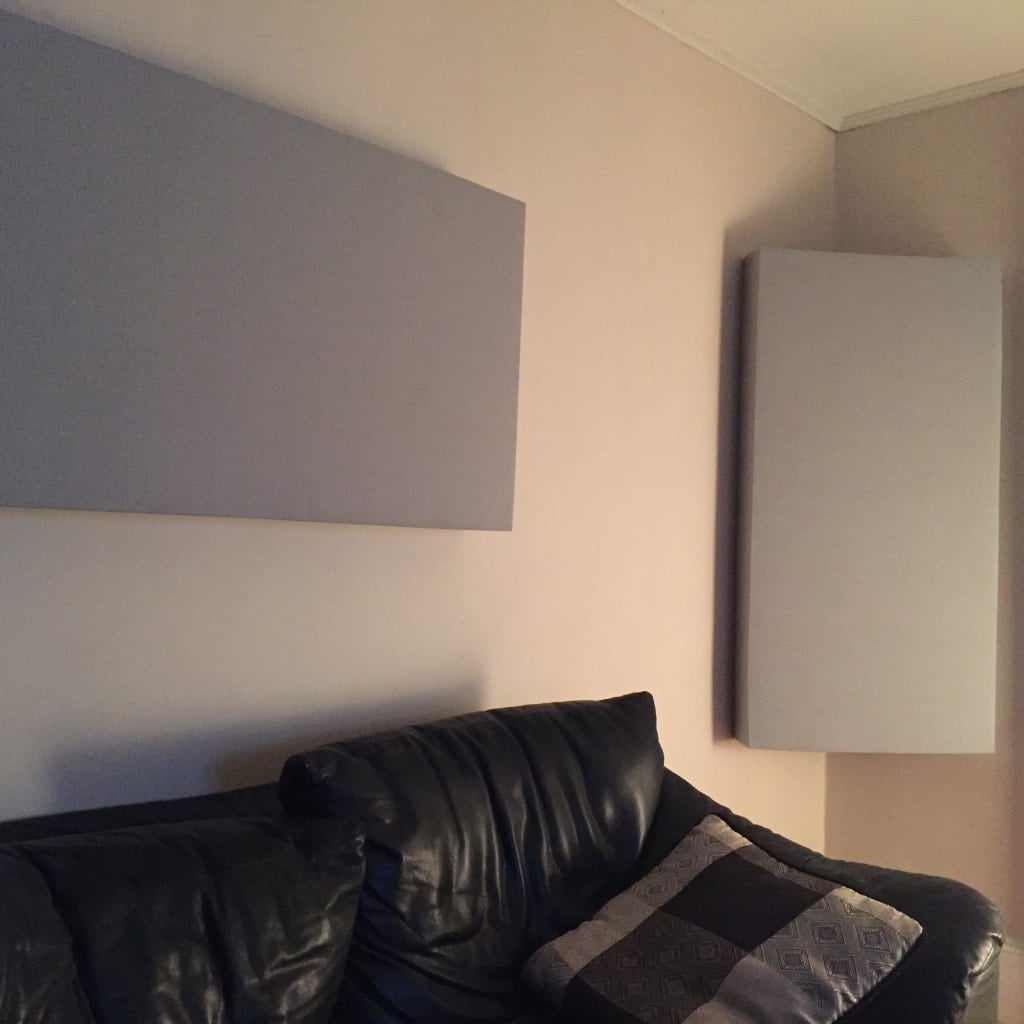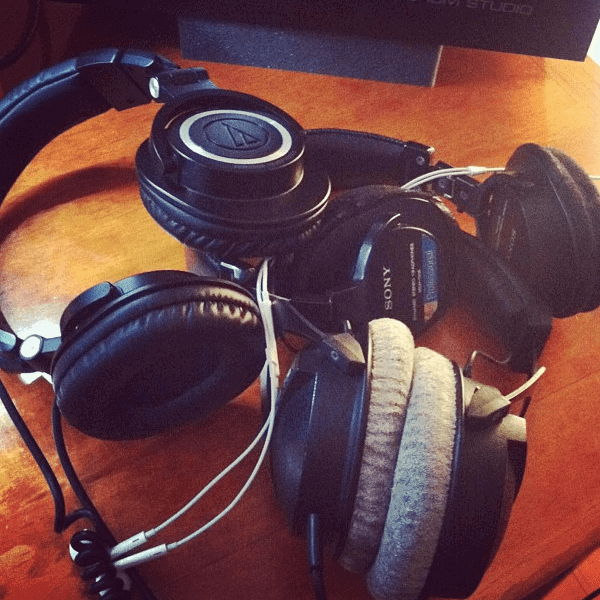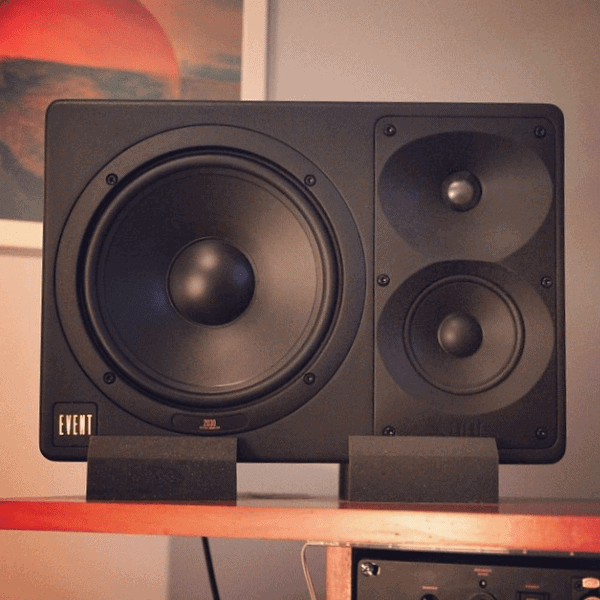There are many different factors that will lead you to making the right decision when choosing the best studio monitors for your music making needs. There’s a lot of options out there and many debates on what is the ideal setup. Ultimately, it will come down to your specific needs as well as subjective situations. Let’s talk about a few of the key topics…
Monitor sizes. Which one is best for you?

The most popular studio monitor sizes generally lie within 3 tiers: 5 – 7 inch, 8-10 inch, 12 inch and above. Which size is best for you depends on the size of your room and the desired frequency response for your monitoring setup.
First, the size of your room is going to play a big part in how your monitors sound as well as how you hear the different frequencies in the mix. If you have a smaller room, generally a smaller monitor may work better for you. Larger monitors with powerful low frequency drivers are going to be overkill and will do nothing but confuse you when it comes to mixing low end. It would be much better to have a smaller set of monitors and have a subwoofer as a utility to reference the low frequencies when needed.
Alternately, having a larger set of monitors can be advantageous when mixing at low volumes. The low end on a larger monitor is going to be much more responsive, therefore easier for you to hear at these volume levels. It’s important to mention that I wouldn’t recommend mixing at super high volume levels in general, only sparingly to gauge your mix.
Room Treatment: Get the most of your studio monitors

Let me start by saying, this step is as important as choosing your studio monitors. If your room isn’t acoustically treated, your facing a whole slew of potential phasing, echo, flutter and low frequency build up issues that will render your monitoring inaccurate. Of course, this effect is worsened at higher levels – you’ll want to at least have some minor treatment done. I would start with bass traps – you can purchase these fairly cheaply online or you can even make your own out of wood and composite materials. This will make your room sound noticeably better and your mixes will translate much more consistently. If needed, use curtains, rugs, etc. – you don’t need an expensive acoustic treatment to get great results!
Mixing with Headphones

First, let’s establish that using headphones as a reference when mixing is a good practice. You can pick up on many aspects of your mix very easily i.e. stereo imaging, reverb and sense of “space” and delays. All of these can be much more distinguishable with ear cans. Let’s also note that most of your audience is listening on cheap earbuds – you might as well check out what they’ll be hearing on the final mix. Of course, there are also times when mixing on monitor speakers is just not an option.
That said, it’s not going to be most beneficial to always mix in headphones. Even with the reasonable volume levels on headphones, your ears become fatigued (sometimes you can even cause hearing damage) and your mixing judgements become impaired. It’s also extremely difficult to find headphones that reproduce low frequencies accurately or even at all. In my own personal experience, I’ve always had trouble getting mixes to translate to other systems well when mixing solely with headphones. Yet again, it is all subjective – if it works for you, do it!
2-way vs 3-way

By definition, a 2-way monitor has 2 speakers or “drivers” while a 3-way has 3 speakers or “drivers” built in. Typically, a 3-way monitor is going to be the more expensive and superior of the two. The reason is that a 3-way monitor has a dedicated mid-range driver which is specifically designed to reproduce those frequencies which mostly cover the spectrum of a vocal. This is will allow you greater clarity when mixing and provide a wider stereo image as well. However, it does come down to the quality of the monitors. A well designed 2-way speaker can also very accurately reproduce the full frequency spectrum. Try both and see which one you prefer!
Subwoofer?
My personal belief is that in today’s industry, with bass being such an important element of a mix, mixing without a subwoofer can be very challenging. You’ll especially want to have some kind of reference for low frequencies if you’re mixing on smaller monitors. Many of these lesser speakers won’t produce frequencies below ~200hz. You don’t need to have your subwoofer blasting all the time but if you have one with a foot switch enabled, kick it on to fine tune your bass quickly and then switch it off. If your car stereo is better at producing low frequencies, reference it there and come back to the session to make adjustments.
Final Thoughts
The easiest step you can take in choosing the best studio monitors is to hear them in action! Listen for yourself and find out which option you like best and what translates well for your work. Many online and retail stores will allow you test monitors in your room – if they don’t work well, you can always exchange them.
Even in the worst circumstances, you can LEARN how your mixes will translate and make adjustments accordingly. It’s possible to get great mixes without quality studio monitors or room treatment – but I can guarantee that with some investment and research, you can make your mixing process more transparent and less of a guessing game.
Top Picks
1. Event 20/30
2. Event 20/20
3. Yamaha NS-10m
4. Audio Technica ATH-M50 (Headphones)
5. Sony MDR-7506 (Headphones)

Personally, I have a small room (studio) and I have been using the samson studio GT monitors and I found the sounds to be TERRIBLE. I am trying to save some $ to buy new ones. It will probably come down to either the Yamaha HS5 or the JBL LSR305. Not sure which one to choose.. What’s your thoughts on those two?
Hey Stephen. I don’t have any experience with JBL but have heard good things. I owned a pair of the HS5’s and was not crazy about them. They didn’t translate well for my taste so I went back to an old set of NS-10s which I’m comfortable having as a set of “b” monitors. Good luck!
Hello Sean,
Thanks for the reply. After thinking a couple days I decided to give the HS5 a try. The seller told me if I didn’t like them I could come back and get a refund. Hopefully I will be happy with my purchase. Thanks for your help